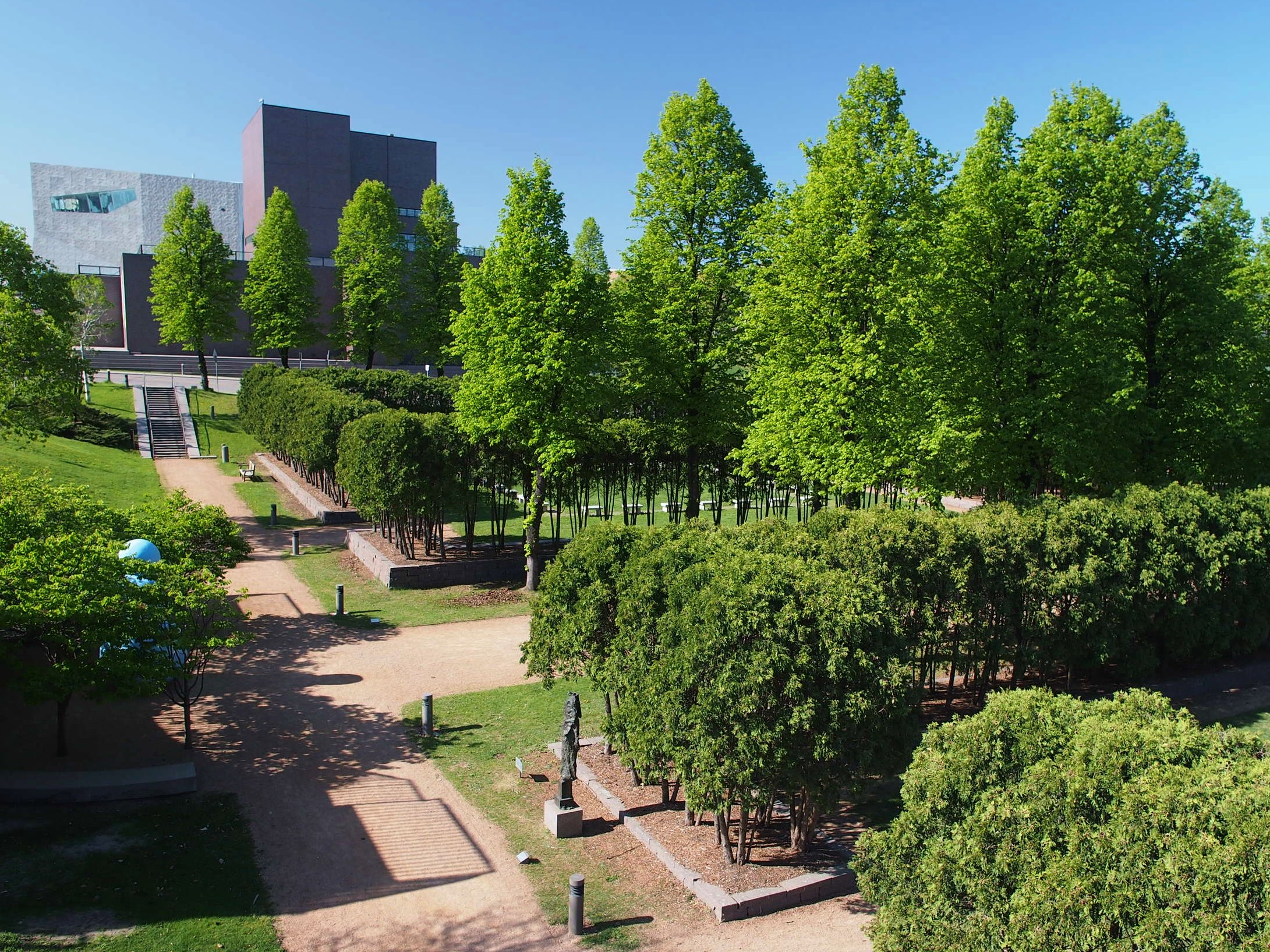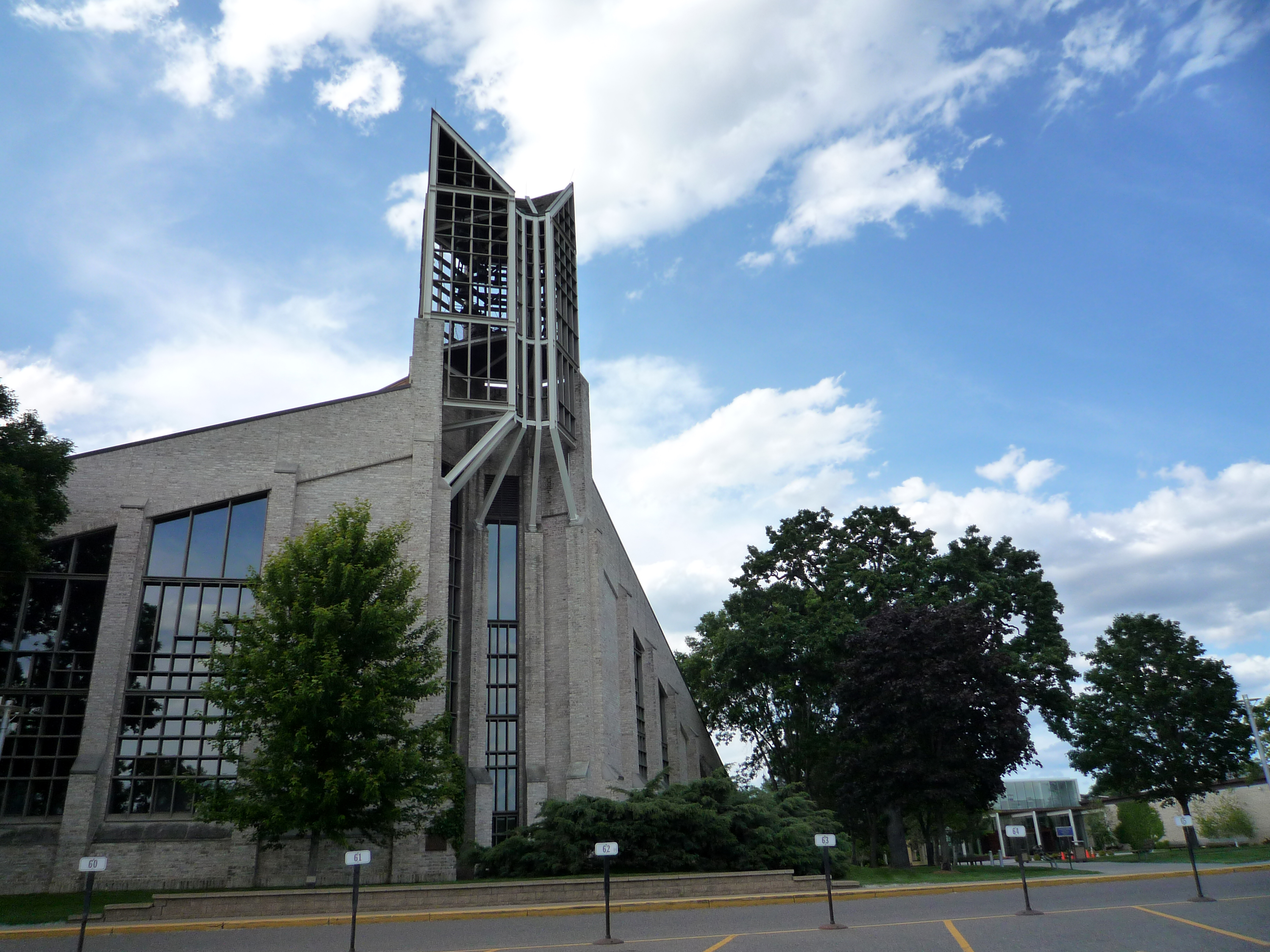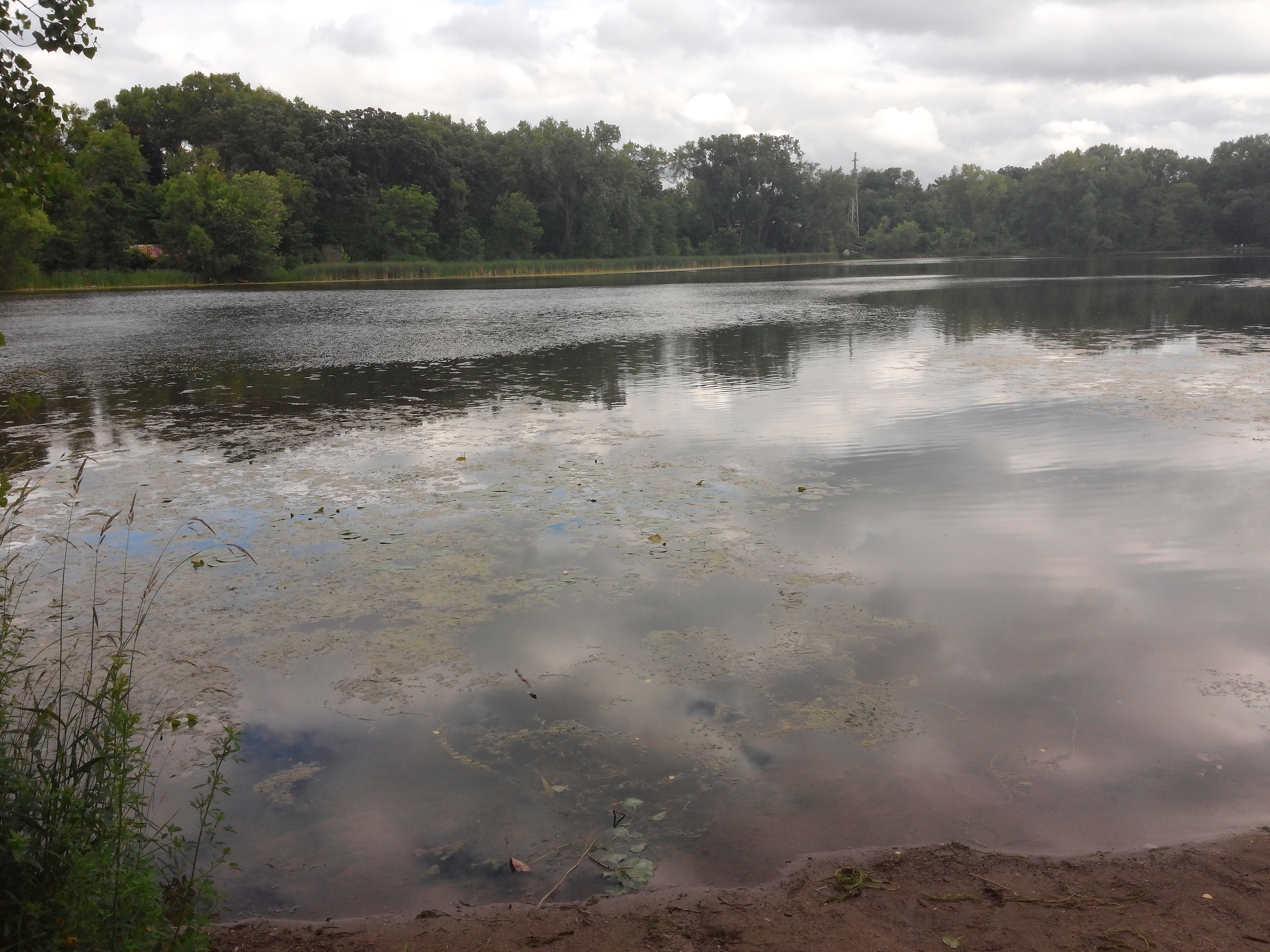|
Chain Of Lakes (Minneapolis)
The Grand Rounds National Scenic Byway is a linked series of park areas in Minneapolis, Minnesota, United States, that takes a roughly circular path through the city. The Minneapolis Park and Recreation Board developed the system over many years. The corridors include roads for automobile traffic plus separate paths for pedestrians and bicycles, and extend slightly into neighboring cities. About of roadway and paths are in the system, and much of it was built in the 1930s as part of Civilian Conservation Corps projects. Byway districts There are seven districts along the byway: #Downtown Riverfront lies along the Mississippi River, and includes Saint Anthony Falls and nearby historic milling districts. The byway follows West River Parkway, beginning at Plymouth Avenue, passing Boom Island Park and Nicollet Island Park (both across the river), and Mill Ruins Park, adjacent to the Mill City Museum and the Stone Arch Bridge. #Mississippi River gorge area extends from downtown Mi ... [...More Info...] [...Related Items...] OR: [Wikipedia] [Google] [Baidu] |
Minneapolis Park And Recreation Board
The Minneapolis Park and Recreation Board (MPRB) is an independent park district that owns, maintains, and programs activities in public parks in Minneapolis, Minnesota, United States. It has 500 full-time and 1,300 part-time employees and an $111 million operating and capital budget. The Minneapolis park system has been called the best-designed, best-financed, and best-maintained in America. Minneapolis was rated the #1 park system in the country for the sixth year in a row by The Trust for Public Land in 2018 and again in 2020. History The Minneapolis Park and Recreation Board was created by an act of the Minnesota State Legislature and a vote of Minneapolis residents in 1883. Charles M. Loring was elected the first president of the board. Loring convinced landowners to donate property around Bde Maka Ska, Lake Harriet and Lake of the Isles, as well as on Minnehaha Creek. Loring hired Horace Cleveland to create the original plan for Minneapolis parks in 1883, Cleveland ... [...More Info...] [...Related Items...] OR: [Wikipedia] [Google] [Baidu] |
Minnehaha Creek
Minnehaha Creek ( dak, Mniȟáȟa Wakpádaŋ) is a 22-mile-long (35 km) tributary of the Mississippi River that flows east from Gray's Bay Dam on Lake Minnetonka through the suburban cities of Minnetonka, Hopkins, Saint Louis Park, and Edina, and the city of Minneapolis. The creek flows over Minnehaha Falls in Minnehaha Park near its mouth at the Mississippi River. History As with much of the Midwest, the area around the creek and Lake Minnetonka was originally inhabited by a native culture affiliated with the Mound Builders, but by the 1700s was occupied by the Mdewakanton People, a sub-tribe of the Dakota. The first Euro-Americans whose expedition to the area was documented were Joe Brown and Will Snelling, who canoed up the creek from Fort Snelling. Watershed The creek's watershed covers 181 square miles (470 km2), including the basin of Lake Minnetonka, and is managed by the Minnehaha Creek Watershed District The Minnehaha Creek Watershed District's mission ... [...More Info...] [...Related Items...] OR: [Wikipedia] [Google] [Baidu] |
Golden Valley, Minnesota
Golden Valley is a western and first-ring suburb of Minneapolis in Hennepin County, Minnesota, United States. The city is mostly residential and is bordered by U.S. Highway 12 (Interstate 394). Over 15% of the city is parks or nature reserves. The Floyd B. Olson Memorial Highway also runs through the heart of the city providing a direct route to the Minneapolis industrial district. Golden Valley is the main corporate headquarters of General Mills, a major flour milling and food products company originally located in Minneapolis. It is also the site of the U.S. headquarters of Pentair and local NBC affiliate KARE. The city was also home to the former Minneapolis-Honeywell headquarters, which is now the Resideo Technologies corporate offices. The city's population was 20,371 at the 2010 census. History Tribes of Chippewa and Sioux had encampments on nearby Medicine Lake. The first white settlers arrived in the early 1850s. Golden Valley was incorporated December 17, 1886. ... [...More Info...] [...Related Items...] OR: [Wikipedia] [Google] [Baidu] |
Brownie Lake
Brownie Lake is a lake in Hennepin County, Minnesota, and within the city limits of Minneapolis. It is the northernmost lake in the Minneapolis Chain of Lakes (Brownie Lake, Cedar Lake, Lake of the Isles, Bde Maka Ska, and Lake Harriet). It is within Brownie Lake Park, and administered by the Minneapolis Park and Recreation Board (MPRB). Hydrology Brownie Lake is a meromictic lake, which means there are two layers of water in the lake with differing physical and chemical conditions, and which do not intermix in spring and fall as occurs in most lakes in the northern temperate zone. It is one of two meromictic bodies of water in Minneapolis, the other being Spring Lake. A chemocline separates the top layer of the lake, which contains dissolved oxygen, from the bottom layer, which is anoxic. There are no natural inflows to Brownie Lake, but it receives storm sewer runoff from six locations around the lake.City of Minneapolis GIS Water Quality Model, 2019. Barr Engineering. Wat ... [...More Info...] [...Related Items...] OR: [Wikipedia] [Google] [Baidu] |
Cedar Lake (Minneapolis)
Cedar Lake is a lake in Minneapolis, Minnesota, United States, and part of the city's Grand Rounds National Scenic Byway#Paths around lakes, Chain of Lakes. It is located on the west side of the city, north of Bde Maka Ska and west of Lake of the Isles. The lake is surrounded by parkland, with some easements having been made to private homeowners on the southeast side; it is the only lake in the city with private shoreline. The south and west sides border the Cedar-Isles-Dean neighborhood, while the east shore flanks the Kenwood, Minneapolis, Kenwood residential area. On the north is the Cedar Lake Trail and the BNSF Railway, and the south Bryn Mawr, Minneapolis, Bryn Mawr neighborhood. Cedar Lake has an area of and a maximum depth of . The Minneapolis Park and Recreation Board manages the lake and parkland around the lake. Paths Cedar Lake is part of the Grand Rounds Scenic Byway, connecting with Brownie Lake Park on the north end and Bde Maka Ska and Lake of the Isles on the sou ... [...More Info...] [...Related Items...] OR: [Wikipedia] [Google] [Baidu] |
Lake Of The Isles
Lake of the Isles ( Dakota: ''Wíta Tópa'', "Four Islands") is a lake in Minneapolis, Minnesota, connected to Cedar Lake and Bde Maka Ska. The lake is part of the city's Chain of Lakes and has an area of , of shoreline with a little under three miles of paved walking and biking paths, and a maximum depth of . Lake of the Isles is known for its two wooded islands, its long north arm, and the surrounding stately houses of the Kenwood, Lowry Hill, and East Isles neighborhoods. History The lake was named for small islands that used to exist in the lake, wetlands area, and was used from the earliest days of European settlement of Minneapolis. Dakota people, the inhabitants prior to Europeans, referred to those islands as Wíta Tópa (Four Islands). The lake, named "Lake of the Isles" appears in an 1835 map of the Fort Snelling area. At one time the lake contained four small islands, but two of them, near the south shore of the lake, were converted to parkland as the lake was dev ... [...More Info...] [...Related Items...] OR: [Wikipedia] [Google] [Baidu] |
Bde Maka Ska
Bde Maka Ska (, previously named Lake Calhoun, its former official designation) is the largest lake in Minneapolis, Minnesota, United States, and part of the city's Chain of Lakes. Surrounded by city park land and circled by bike and walking trails, it is popular for many outdoor activities. The lake has an area of and a maximum depth of . Lake and surrounding area The lake is part of the Grand Rounds National Scenic Byway, connecting with Lake of the Isles on the northeast, Cedar Lake and Brownie Lake on the northwest, and Lake Harriet on the south. The Minneapolis Park and Recreation Board trail system has a trail around the lake for bicyclists and skaters and a trail around it for pedestrians. Both of these trails connect to the larger trail system via connections to Lake of the Isles and Lake Harriet. In addition, the Midtown Greenway Trail is located just north of the lake and Lake Street. The lake itself is popular for canoeing, kayaking, and windsurfing, a ... [...More Info...] [...Related Items...] OR: [Wikipedia] [Google] [Baidu] |
Lyndale Farmstead
Lyndale can refer to any of several places and things: * Lyndale, Minneapolis, a neighborhood in Minneapolis, Minnesota, USA ** Lyndale Park, a park in Minneapolis ** Lyndale Avenue, a major thoroughfare in Minneapolis * Lyndale Railway, a defunct Minnesota rail company * Lyndale, Ontario, a community in Ontario, Canada * Lyndale Secondary College, in Melbourne, Australia * Lyndale Football Club, an Australian rules football team from Melbourne *Lyndale AFC, a former New Zealand association football team, now merged as part of Lynn-Avon United {{disambig ... [...More Info...] [...Related Items...] OR: [Wikipedia] [Google] [Baidu] |
Lyndale Park
Lyndale Park is a Minneapolis city park on the northeast side of Lake Harriet. It is next to Lakewood Cemetery, southeast of Bde Maka Ska. It is part of an enormous greenspace circling through Minneapolis called the Grand Rounds Scenic Byway, and is one of the seven districts within, called the Chain of Lakes. The other six districts within Grand Rounds are the Downtown Riverfront, Mississippi River, Minnehaha, Theodore Wirth, Victory Memorial Parkway, and Northeast. Managed by the Minneapolis Park and Recreation Board, the parkway system has numerous parks and parkways, lakes (22 within the city limits), streams and creeks, the Mississippi River, and the high Minnehaha Falls. The park system is designed so that every home in Minneapolis is within six blocks of green space. Lyndale Park is and contains four gardens; the Peace Garden, the Rose Garden, the Perennial Garden, and the Perennial Trial Garden. Immediately adjacent to the Peace Garden is the Thomas Sadler Roberts ... [...More Info...] [...Related Items...] OR: [Wikipedia] [Google] [Baidu] |
Lake Harriet (Hennepin County, Minnesota)
Lake Harriet ( Dakota: ''Bdé Umáŋ'', "Other Lake") is a lake in the southwest part of Minneapolis, just south of Bde Maka Ska and north of Minnehaha Creek. The lake is surrounded by parkland as part of Minneapolis’ Chain of Lakes. The lake has an area of and a maximum depth of . History Lake Harriet is named for Harriet Lovejoy, who lived with her husband Colonel Henry Leavenworth at Fort Snelling. The two came to the area in 1819. The lake and surrounding land was last owned by Colonel William S. King, who donated the land to the Minneapolis Park and Recreation Board in 1885. The bandshell A public pavilion has been located on the northern side of Lake Harriet since 1888 when a pavilion was erected on the property of Thomas Lowry. It stood on the edge of Lake Harriet until 1891, when it was destroyed by fire. After the fire, Minneapolis hired architect Harry Wild Jones to design the next bandshell. Designed in a pagoda-like style, the second pavilion overlooked the lake u ... [...More Info...] [...Related Items...] OR: [Wikipedia] [Google] [Baidu] |
Minnesota State Highway 55
Minnesota State Highway 55 (MN 55) is a highway in west-central, central, and east-central Minnesota, which runs from the North Dakota state line near Tenney and continues east and southeast to its eastern terminus at its intersection with U.S. Highway 61 in Hastings. This route, signed east–west, runs roughly diagonally across the central part of Minnesota. Highway 55 is in length. Route description Highway 55 serves as a northwest–southeast route between Elbow Lake, Glenwood, Paynesville, Annandale, Buffalo, Plymouth, Minneapolis, Mendota Heights, and Hastings. Highway 55 begins at the Bois de Sioux River, at the Minnesota — North Dakota state line near Tenney. North Dakota Highway 11 is its counterpoint upon crossing the state line. Highway 55 continues east to Tenney, Nashua, and Wendell. The route has a junction with U.S. Highway 59 before entering the city of Elbow Lake. Highways 55 and 59 run concurrently for 11 miles until reaching Barr ... [...More Info...] [...Related Items...] OR: [Wikipedia] [Google] [Baidu] |
Longfellow House
The Longfellow House in Minneapolis, Minnesota, United States, is a 2/3 scale replica of Henry Wadsworth Longfellow's home in Cambridge, Massachusetts. Built in 1907, the house was neither seen nor lived in by Longfellow (who died in 1882), but was the home of an admiring Minneapolis businessman named Robert "Fish" Jones. Longfellow House stands within Minnehaha Park and is a contributing property to the Minnehaha Park Historic District. Early history In 1885, Robert "Fish" Jones sold his downtown Minneapolis fish market, and built a zoo on the site where the Basilica of St. Mary stands today. He eventually moved his zoo a few miles south into an area next to the Minnehaha Creek. He rebuilt his zoo, the Longfellow Zoological Gardens, and opened it in 1907. At the same time, he built a house for himself, styled after Henry Wadsworth Longfellow's home. A yellow frame house with porches at each end, he lived there for the next 23 years until he closed the zoo, due to ... [...More Info...] [...Related Items...] OR: [Wikipedia] [Google] [Baidu] |




